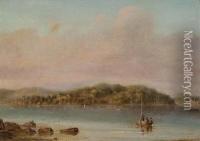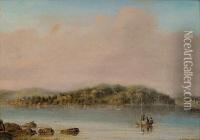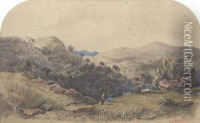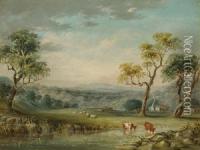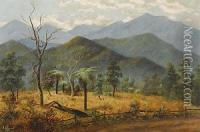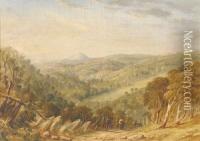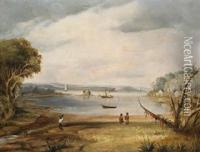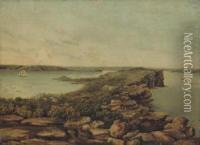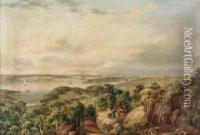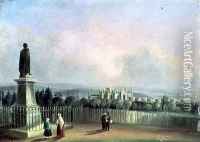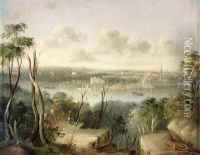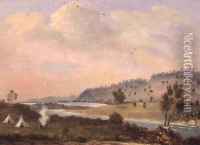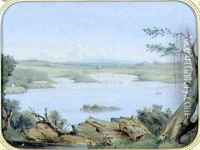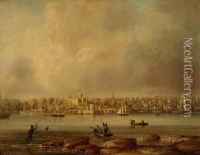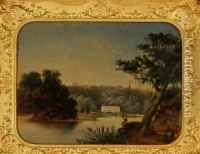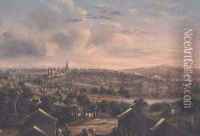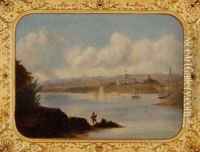George Edward Peacock Paintings
George Edward Peacock was an English painter, primarily known for his landscapes and architectural works. Born in 1806, Peacock developed an interest in art at a young age. Although not as widely recognized as some of his contemporaries, Peacock contributed to the art scene during the 19th century with his detailed and picturesque paintings.
Peacock's early life and training are not thoroughly documented, but it is known that he found inspiration in the British countryside, as well as in the historical and architectural heritage of the nation. He was part of the Victorian era of painting, a time when there was a significant interest in accurately documenting places and events, as photography was still in its infancy.
Throughout his career, Peacock exhibited his work at various institutions, including the Royal Academy of Arts. His paintings often depicted serene landscapes, stately homes, and churches, characterized by their precise detail and use of light. Peacock's work resonated with Victorian sensibilities, capturing the essence of rural England and its architecture.
Despite his contributions, George Edward Peacock did not gain the same level of fame as some of his peers. As a result, information about his personal life and artistic training is relatively scarce. After his death in 1883, his paintings continued to be appreciated by collectors and art enthusiasts who value the quiet beauty and historical significance of his works.
Peacock's legacy is that of a skilled landscape and architectural painter who captured the spirit of his time. His paintings serve as a visual record of the 19th-century English landscape and remain of interest to those who study Victorian art and society.

